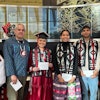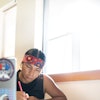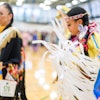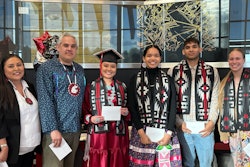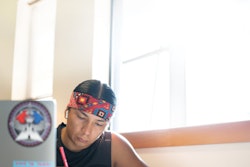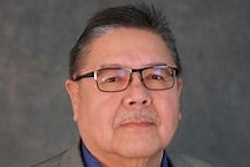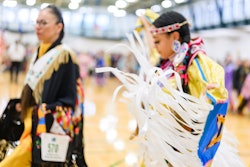For his senior exhibition, Nicholas Begay, a studio arts student at the Institute of American Indian Arts, created jewelry inspired by Diné craftsmanship, centered around the themes of “environmentalism,” “health and safety” and “environmental racism.” His work highlights how coal mining has impacted the Navajo reservation. One textured brooch – made of copper, brass and steel – features a blackened set of lungs.
But this year, he faced a new challenge. How do you display a three-dimensional art piece for the campus community to see, after a pandemic shuts down campus?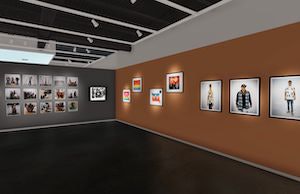
Like most higher education institutions, the Institute of American Indian Arts shifted online after spring break this year in response to COVID-19.
The tribal college and arts school in Santa Fe, New Mexico went into “panic mode” trying to move such hands-on work to a virtual environment, said Mattie Reynolds, assistant professor of museum studies and director of the Balzer Contemporary Edge Gallery.
But the school got creative. It’s now running the second of two virtual exhibits featuring senior artwork, called “Virtual Reservation,” a collaboration between faculty, IT staff and students using software from Ortelia Interactive, an Australian company. Visitors can use the arrow keys to navigate through the gallery, clicking on artist bios and their art to see students’ individual pieces close-up.
Students chose the title “Virtual Reservation,” a meaningful name to Begay. It reminds him of how his Diné ancestors were forced to leave their land and go to Fort Sumner in southern New Mexico – how isolating the reservation must have felt and how isolating the pandemic is.
During COVID-19, “we’re here in our virtual little domes …” he said. “We’re all just self-preserved, going through that as kind of our ancestors did. We’re trying to evade a plague.”
